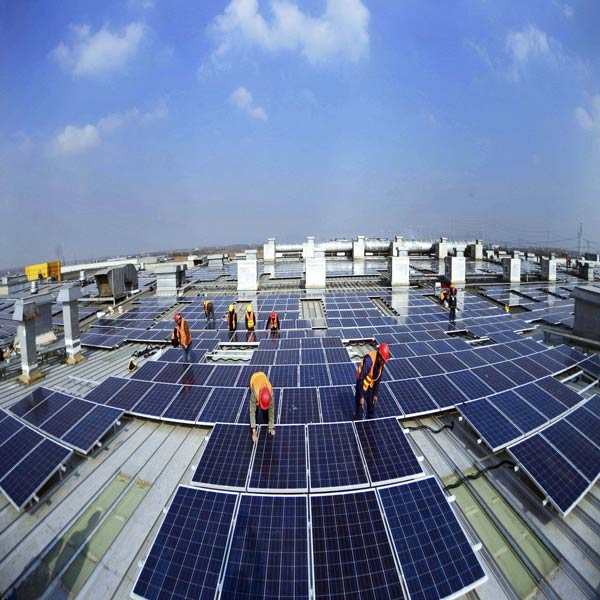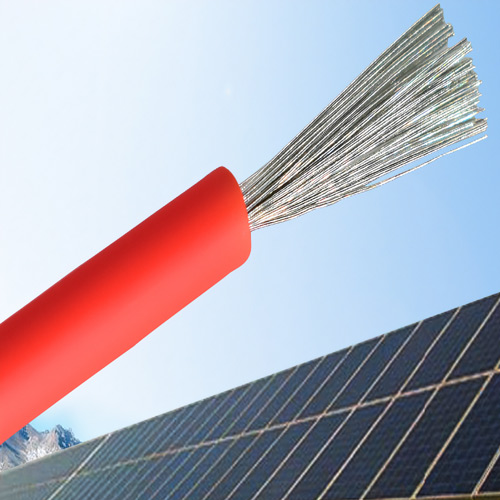In recent years, the technology in the photovoltaic industry is developing faster and faster. Such as the power of a single module is getting bigger and bigger. And the current of the string is getting bigger and bigger. With this comes the popularity of PV cable.
System design and component-appropriate overmatch can also reduce the initial investment cost. Then, in the photovoltaic system, the application of high-power high-efficiency components and components after high overmatch. The photovoltaic system cable should be how design selection.
First ZMS cable editor first takes you to understand what is PV cable. This article will also bring you some knowledge of the reasonable selection of photovoltaic cables.
Solar technology will become one of the future green energy technologies. Solar energy or photovoltaic (PV) is increasingly widely used in China.
In addition to the rapid development of government-supported photovoltaic power plants. Private investors are also actively building plants and planning to put into production solar modules sold worldwide.

The properties of PV cables are determined by their cable-specific insulation and sheathing material, which we call cross-linked PE. After irradiation by an irradiation gas pedal, the molecular structure of the cable material is changed, thus providing its individual properties.
In fact, during installation and maintenance, the cables can be routed on the sharp edges of the roof structure.
At the same time, cables are subjected to pressure, bending, tension, cross-tension loads, and strong shocks.
If the cable sheath is not strong enough, the cable insulation will be severely damaged, which can affect the entire cable life or lead to short circuits, fire, and injury hazards.
The main performance of photovoltaic cables is electrical performance.
Electrical Performance
1 PV Cable DC Resistance
Finished cable 20 ℃ when the conductive core DC resistance is not greater than 5.09 Ω / km.
2 Immersion Voltage Test
The finished cable (20 m) in (20 ± 5) ℃ water immersion time of 1h after a 5-min voltage test (AC 6.5kV or DC 15kV) does not break down.
3 Long-Term Dc Voltage Resistance
Sample length of 5 m, into (85 ± 2) ℃ containing 3% sodium chloride (NaCl) distilled water (240 ± 2) h, both ends exposed to the water surface 30 cm.
Between the core and water plus DC 0.9kV voltage (conductive core connected to the positive pole, water connected to the negative pole).
After taking out the specimen for the water immersion voltage test, the test voltage is AC 1kV, the requirement is not breakdown.
4 PV Cable Insulation Resistance
Finished cable insulation resistance at 20 ℃ is not less than 1014 Ω-cm.
Finished cable insulation resistance at 90 ℃ is not less than 1011 Ω-cm.
5 Sheath Surface Resistance
The finished cable sheath surface resistance should be not less than 109 Ω.
Performance Test
1 High-Temperature Pressure Test
Temperature (140±3)℃, time 240 min, k=0.6, indentation depth of not more than 50% of the total thickness of the insulation and sheath. And AC6.5kV, 5 min voltage test, no breakdown is required.
2 Damp Heat Test
The sample is placed at 90℃ and 85% relative humidity for 1000h, and after cooling to room temperature. The change rate of tensile strength is ≤-30% and the change rate of elongation at break is ≤-30% compared with that before the test.
3 Compatibility Test
The cable as a whole after 7×24h, (135±2)℃ aging, insulation aging before and after the rate of change of tensile strength ≤ ± 30%, the rate of change of elongation at break ≤ ± 30%.
Sheath aging before and after the rate of change of tensile strength ≤ -30%, the rate of change of elongation at break ≤ ± 30%.

So, how to choose the newly emerged photovoltaic cable?
First, for the laying of the cable path, it has to comply with the following provisions.
1 Avoid mechanical external forces, overheating, corrosion, and other hazards to the cable.
2 To meet the safety requirements under the conditions of the cable being shorter.
3 Easy to lay, maintenance.
4 Avoid the place where the construction will be excavated.
5 Cable in any laying method and all its path conditions of the upper and lower left and right change parts, should meet the cable allowable bending radius requirements.
DC Cable Selection by Component
DC cables are installed in the sun, it is recommended to choose special cables for photovoltaics.
Unlike ordinary cables, the material of photovoltaic cables is added to resist ultraviolet light and ozone.
And can withstand drastic temperature changes and chemical erosion, and can be used outdoors for more than 25 years.
Photovoltaic cable models are more, the cross-sectional area of 1.5 m ㎡ to 35 m ㎡ are available, the more used is 4 m ㎡.
With the increase in PV module current, and the increase in the power of the single inverter. The length of the cable is also increasing, and the application of the 6 m㎡ DC cable is also increasing.
It is generally recommended that the loss of photovoltaic DC should not exceed 2%, and we can design and select DC cables by this standard.
AC Cable Selected by Inverter
To reduce costs, the PV power plant components and inverters are now rarely configured according to the ratio of 1:1, but according to the light conditions, project needs, etc.
There is a certain amount of over-allocation.
For example, for a power plant with a 1:1.2 overmatch, the module is 24kW, with a 20kW inverter.
How do choose the AC cable according to the maximum current of the inverter?
Because no matter how much, the modules are over-matched. The inverter has a current limit function and the AC input current will never exceed the maximum current of the inverter.
Commonly used AC copper cables for PV systems are BVR and YJV and many other models.
BVR means copper core PVC insulated flexible wire, YJV cross-linked polyethylene insulated power cable, the selection should pay attention to the voltage level and temperature level of the cable, and should choose the flame retardant type.
These are some of the science on the selection of photovoltaic cables. With the rapid development of society, the demand for cables will only get higher and higher.
And with it, the safety of the cable pays special attention. Choosing a safe and appropriate cable is the responsibility of life.
The ZMS cable manufacturer always insists on providing high-quality cables, good value for money, considerate service, and products that have undergone strict manual qualification audits and are trustworthy.

